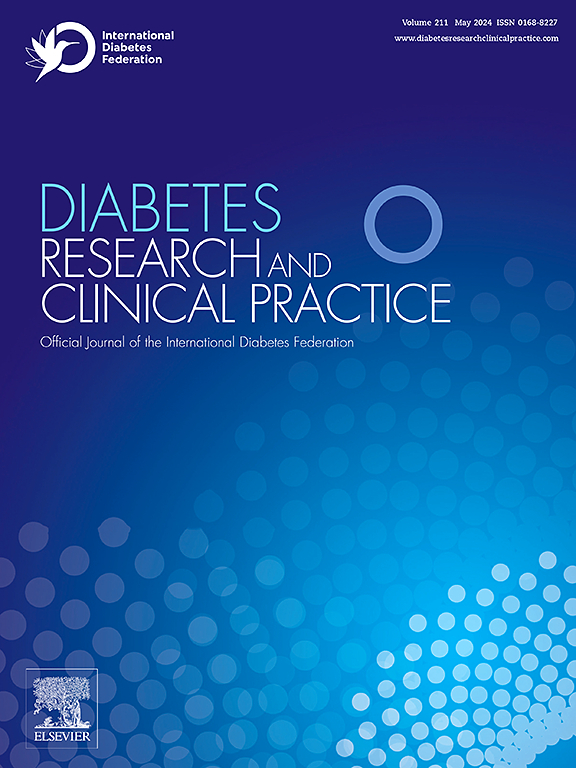2型糖尿病的自主神经功能和血流动力学改变:交感神经激活和血管僵硬
IF 6.1
3区 医学
Q1 ENDOCRINOLOGY & METABOLISM
引用次数: 0
摘要
目的本研究旨在探讨2型糖尿病(T2D)患者自主神经功能、动脉僵硬度和血管顺应性之间的关系。方法81例T2D患者按病程分为10年组(N = 50)和10年组(N = 31)。自主神经功能通过心率变异性评估,血管血流动力学通过脉搏波速度(PWV)评估。线性和多元回归分析探讨了自主神经功能和血管参数之间的关系。结果女性参与者占多数,10岁组占60%,10岁组占64.5%。10岁组和10岁组的合并症发生率分别为67.7%和70%。除了10岁组的白蛋白/肌酐比值显著(p = 0.007)外,生化差异很小。中枢血流动力学无显著差异,但清醒时交感神经活动与舒张压相关(r = 0.45, p = 0.003)。结论:虽然动脉僵硬和自主神经功能之间没有直接联系,但交感神经激活的增加与舒张压升高有关。早期筛查、改变生活方式和有针对性的治疗可以改善患者的预后和T2D管理。本文章由计算机程序翻译,如有差异,请以英文原文为准。
Autonomic function and hemodynamic changes in type 2 diabetes: insights into sympathetic activation and vascular stiffness
Aims
This study aimed to investigate the relationship between autonomic function, arterial stiffness, and vascular compliance in patients with type 2 diabetes (T2D).
Methods
Eighty-one T2D patients were divided into two groups based on disease duration: <10 years (N = 50) and >10 years (N = 31). Autonomic function was assessed via heart rate variability, and vascular hemodynamics via pulse wave velocity (PWV). Linear and multivariate regression analyses explored associations between autonomic function and vascular parameters.
Results
Female participants predominated, accounting for 60 % in the <10 years group and 64.5 % in the >10 years group. Comorbidities were present in 67.7 % of the <10 years group and 70 % of the >10 years group. Biochemical differences were minimal, except for a significant albumin/creatinine ratio in the >10 years group (p = 0.007). Central hemodynamics showed no significant differences, but sympathetic activity correlated with diastolic blood pressure (DBP) during wakefulness (r = 0.45, p = 0.003).
Conclusions
While no direct correlation was found between arterial stiffness and autonomic function, increased sympathetic activation was linked to higher DBP. Early screening, lifestyle modifications, and targeted treatments could improve patient outcomes and T2D management.
求助全文
通过发布文献求助,成功后即可免费获取论文全文。
去求助
来源期刊

Diabetes research and clinical practice
医学-内分泌学与代谢
CiteScore
10.30
自引率
3.90%
发文量
862
审稿时长
32 days
期刊介绍:
Diabetes Research and Clinical Practice is an international journal for health-care providers and clinically oriented researchers that publishes high-quality original research articles and expert reviews in diabetes and related areas. The role of the journal is to provide a venue for dissemination of knowledge and discussion of topics related to diabetes clinical research and patient care. Topics of focus include translational science, genetics, immunology, nutrition, psychosocial research, epidemiology, prevention, socio-economic research, complications, new treatments, technologies and therapy.
 求助内容:
求助内容: 应助结果提醒方式:
应助结果提醒方式:


